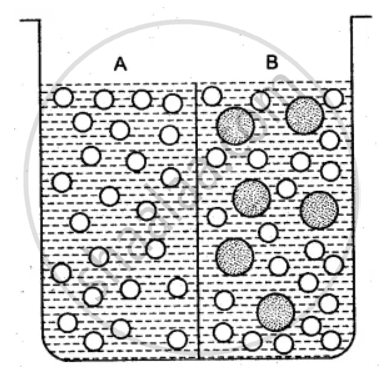Advertisements
Advertisements
Question
Give a diagrammatic representation of plasmolysis in a cell.
Solution

(a) A cell in normal turgid condition
(b) - (d) Successive stages in shrinkage of protoplasm from the cell well after being placed in a hypertonic solution. Diagrammatic representation of plasmolysis in a cell
APPEARS IN
RELATED QUESTIONS
A plant cell placed in a certain solution got plasmolysed. What was the kind of solution?
(a) Mention whether the following statement is true (True) or false (False)
(b) Correct the false statement by altering the last word only.
A plant cell placed in hypotonic solution gets Plasmolysed.
Define the following:
Osmosis
Name the following:
Two solutions having same concentrations.
The diagram given below is of an experiment just at the start. Study the diagram carefully and answer the following questions :
(i) What does the experiment demonstrate?
(ii) Define, the process demonstrated in the experiment.
(iii) What changes are observed after a few hours?
(iv) Give two examples of a semi-permeable membrane.
(v) Which limb of the U-tube contains a more concentrated sucrose solution, A or B?
(vi) Why is the membrane separating the two solutions labeled as semi-permeable membrane?
The beaker is divided into two chambers A and B. The big circle represents solute and the small circles solvent.
(i) What can you say about the size of the holes in the membrane, if it is to behave semi- permeably between these two?
(ii) Will the solvent molecules pass through the membrane from left to right, from right to left, in either direction or in both directions?
(iii) In which direction will there be a net movement of solvent molecules?
Name the following:
The movement of a liquid through a selectively permeable membrane.
Name the following:
The process by which raisins swell up when placed in a beaker of water.
Fill in the Blank
When there is no movement of water in the cell from the outside medium, the medium is considered to be ______ to cell sap.
Explain the Term: Endosmosis
